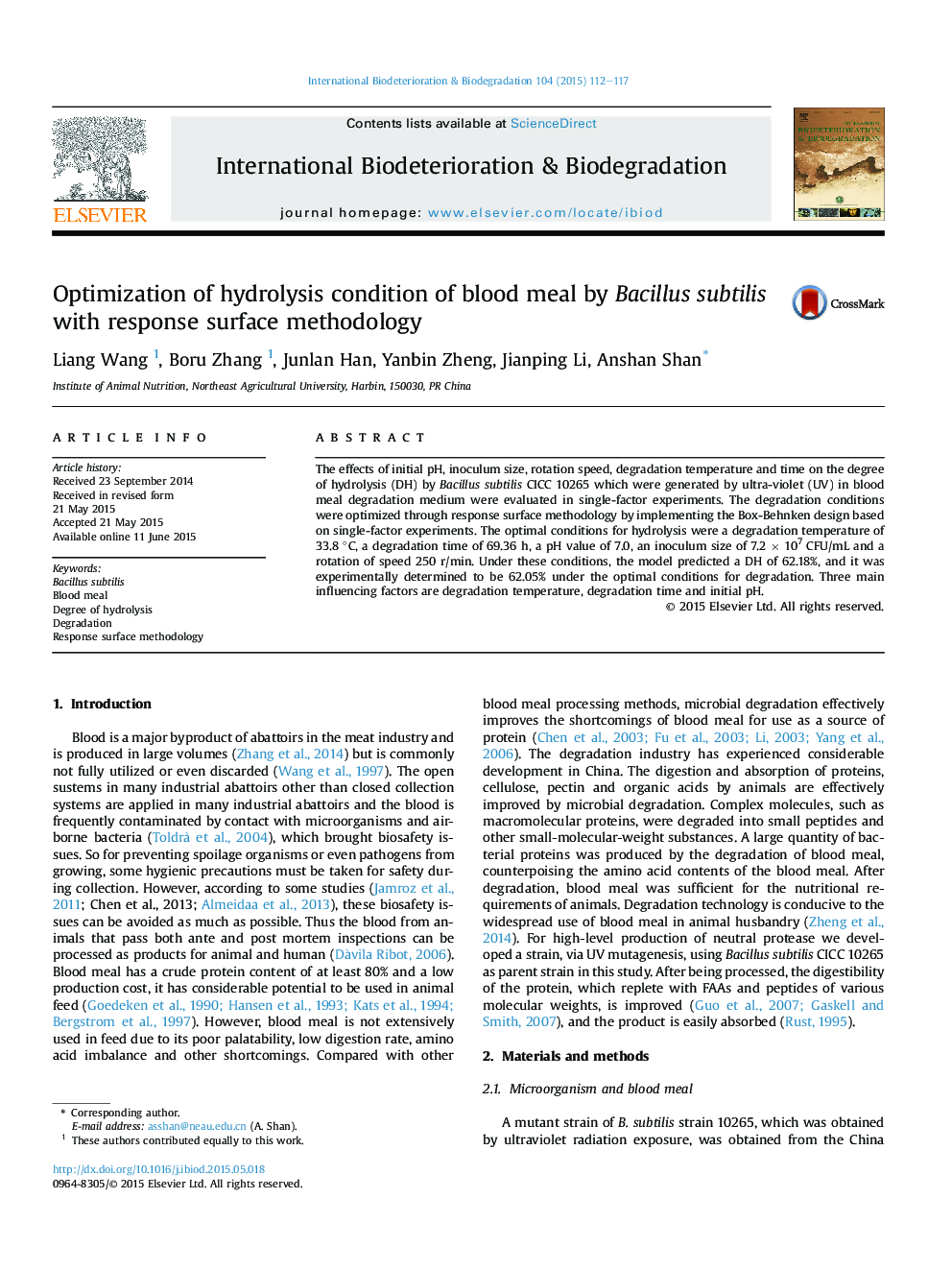| Article ID | Journal | Published Year | Pages | File Type |
|---|---|---|---|---|
| 4364467 | International Biodeterioration & Biodegradation | 2015 | 6 Pages |
•This study offers an solution to the degradation of blood waste and offers a high-quality and low-cost protein source.•Two statistical methods were applied to optimize the degradation conditions using blood cells as the nitrogen source.•The Bacillus subtilis mutant was generated using ultra-violet mutagenesis to enhance neutral protease production.
The effects of initial pH, inoculum size, rotation speed, degradation temperature and time on the degree of hydrolysis (DH) by Bacillus subtilis CICC 10265 which were generated by ultra-violet (UV) in blood meal degradation medium were evaluated in single-factor experiments. The degradation conditions were optimized through response surface methodology by implementing the Box-Behnken design based on single-factor experiments. The optimal conditions for hydrolysis were a degradation temperature of 33.8 °C, a degradation time of 69.36 h, a pH value of 7.0, an inoculum size of 7.2 × 107 CFU/mL and a rotation of speed 250 r/min. Under these conditions, the model predicted a DH of 62.18%, and it was experimentally determined to be 62.05% under the optimal conditions for degradation. Three main influencing factors are degradation temperature, degradation time and initial pH.
